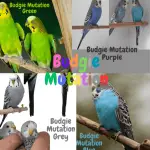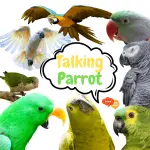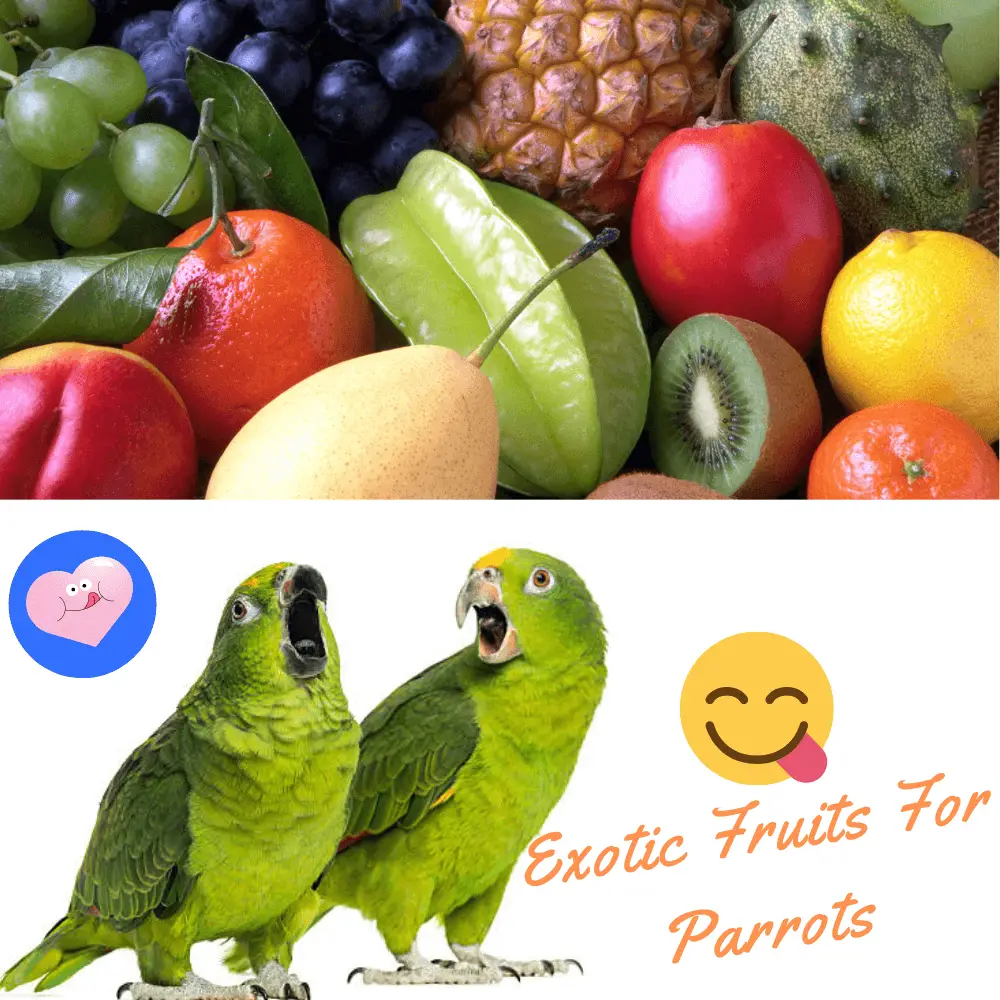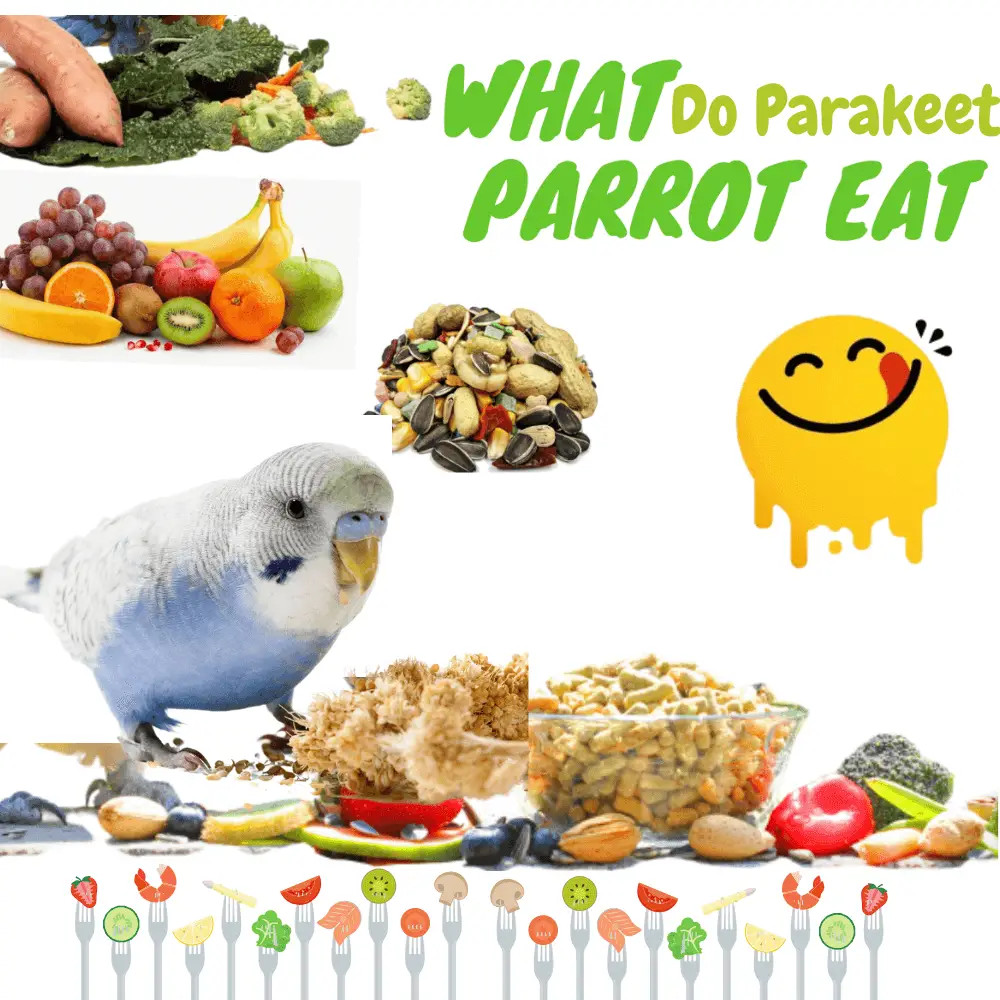
This article concerns us all. What do parakeets eat? Whether we are, breeders or holders of a so-called pet parrot, what must be kept in mind when living surrounded by this type of bird is that one of the points not to be neglected is their diet.
Logic! You might say. Indeed… But is it really that simple?
We are (and this is a good thing), increasingly better informed about the nutritional needs of Psittacidae, but many of us still sometimes make mistakes, which can harm in the more or less long term, the health of our friends all dressed in feathers.
Indeed, a poorly adapted diet can lead to deficiencies, digestive problems, kidney dysfunctions, and diabetes, and can also be the cause of pecking. Malnutrition can be the cause of laying sickness in deficient females or be responsible for embryonic mortalities.
I do not claim to have absolute knowledge in this matter, but I do know one thing: A parrot that feeds poorly becomes a fragile bird exposed to diseases.
Before getting to the heart of the matter, it would be good to recall two important points:
With these principles established, here are some “common sense” rules to follow if we want to preserve the health of our feathered friends.
You are not unaware that some foods are harmful or even totally toxic to our birds (avocado, chocolate, rhubarb, eggplant … etc). I will not make a complete list here, but I will insist on the absolute necessity, to always inquire in order to avoid any disappointments for Coco. Feel free to print as complete a list as possible or keep it handy. In case of doubt, it is better to abstain.
You have certainly already understood how tenacious your parrot can be in many areas, including food.
Well, ladies and gentlemen, I regret to announce that for his own good, you will have to be much more stubborn than he is.
Would you let a child eat exclusively chocolate just because they love it? I very much doubt it.
Let’s be clear, a parrot that feeds almost exclusively on black-streaked sunflower seeds, for example, may sooner or later develop serious health problems.
Far be it from me to ban sunflower seeds altogether, they can be a part of your parrots’ diet without constituting the major part. The key word is diversification.
So, even if he makes you soft eyes, the fries on your plate should be forbidden to him, just like the piece of pizza on Saturday night.
Joking aside, Coco is not omnivorous.
The groundwork is laid, let’s talk now, about nutrition.
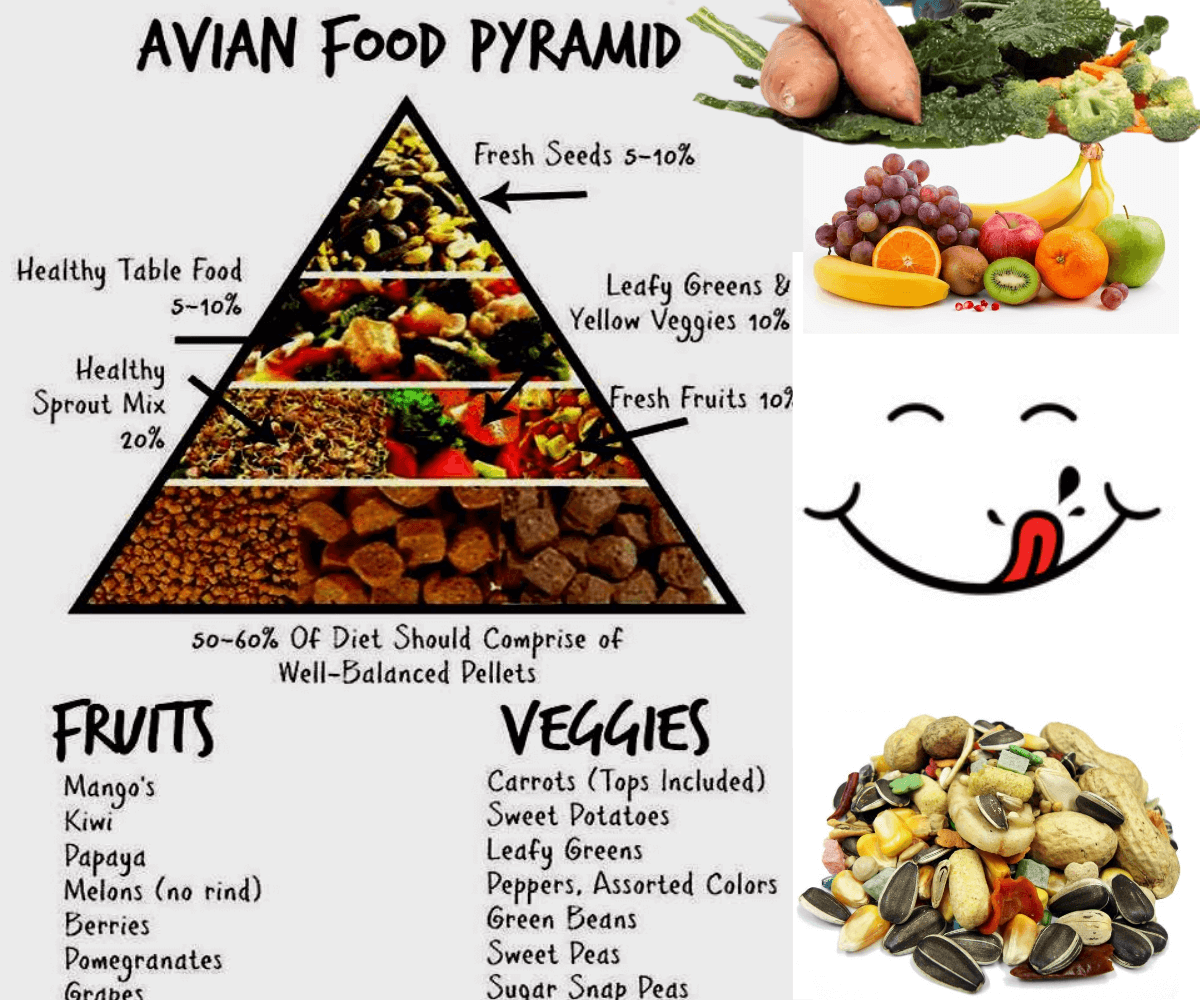
Budgie parakeet like to eat seed
SOURCE: African Grey Parrot Pet
You have two options
- Extruded
The first possibility is to feed your bird with extrudes. There are today, of different sizes, brands, and compositions adapted to different species and their way of life.
To these extruded will have to be added daily fresh fruits and vegetables.
If you choose this diet, it should be kept in mind that extruded will have to represent 50% of the daily ration.
The advantages of this diet are numerous. The extruded are fully edible and composed to cover all the nutritional needs of the birds. They also allow good hygiene of the bowls and are simple to distribute.
If there was a downside, it might be the monotonous side of this power supply. Parrots in captivity can sometimes lack distractions, and extruded do not allow them to discover new colors, smells, or textures.
- A more “traditional” diet:
The second way to feed your parrots can be called “classic”.
It consists of a daily distribution of a mixture of fresh fruits and vegetables as well as a mixture of dry seeds, adapted to the species.
This method requires a little more preparation time, a more sustained cleaning of the bowls, and especially a great diversity in the choice of food to cover the nutritional needs of the bird.
You can opt for a mixture of seeds to soak, germinate or cook, which will already bring a nice diversity to the daily ration of Coco.
You have the opportunity to buy his seeds to soak in the organic section of your store or to buy a pigeon mixture.
Preparing soaked seeds is very simple. Simply rinse your seed mixture well before soaking them in water at room temperature for 12 to 24 hours, while rinsing them three to four times a day before distributing it.
Mixing seeds in the process of soaking
If you want to cook them, a 12-hour preliminary soaking will be necessary and then cooking for about 30 minutes.
For germination, the process is the same as for soaked seeds. It will be enough to arrange the seeds previously soaked in a germinator for a dozen additional hours. The idea is to distribute them when the germ is barely born.
What fruit for a parrot?
To this mixture of soaked seeds, you can add, at your convenience, pieces of fresh vegetables, such as zucchini, pepper, squash, beans, cabbage, broccoli, carrots … etc, and many more.
You can also decorate this preparation with fresh fruit (banana, apple, passion fruit, melon, strawberry, gooseberry …).
As far as possible, it is better to favor vegetables and choose “rich” fruits such as mango, papaya, prickly pear … etc.
This fresh food salad will be distributed preferably early, in the morning, and the dry seed mixture, rather in the afternoon.
It goes without saying that the dry seed mixture must be chosen for its quality, diversity, and of course according to the species held. You will easily find on the market, the brand and the mixture that suits you.
Now to your bird’s energy needs
- If it evolves in an outdoor aviary throughout the year, it will be necessary to take into account the seasons. (It must be able to withstand winter temperatures for example). Thus, a little before and during the cold season, a supplement of food called “fat” will have to be distributed.
In order to prepare for the breeding season, or to help it a little during molting, it is possible to add pâté to the eggs, two to three times a week.
- If Coco, knows only the cozy interior of her home and steals very little, her diet will be less rich to avoid being overweight in particular. So-called fatty foods such as nuts, for example, will have to be distributed more sparingly or as a reward.
In any case, it will be necessary to know how to adapt to the species and take into account its metabolism.
For example, a macaw needs more fatty foods than other Psittacidae. So he needs nuts daily.
Do not hesitate to vary the pleasures, it is not the choice that is lacking! (Walnuts, Macadamia nuts, Brazil nuts, pecans, cedar nuts, hazelnuts, almonds … etc.)
How to recognize dietary deficiencies?
One of the first signs of unsuitable feeding is certainly the quality of your bird’s plumage. Difficult molts and fragile feathers with dull colors are often a sign of a dietary imbalance.
Being overweight or thin in a bird can also be linked to a poor diet. Check its sternum regularly or weigh it relatively regularly if possible.
Do not rely solely on the appearance of your bird which can swell its feathers and hide a possible weight loss. Parrots are masters in the art of hiding their discomfort.
A little advice, do not compare the weight of your feathered friend with that of your neighbor.
Indeed, not all cockatoos alba, for example, have the same weight.
If yours weighs 50 grams less than your friend’s, it doesn’t necessarily mean they’re skinny or unhealthy.
He is perhaps younger, a little smaller, a little less muscular, or perhaps also, that the other alba is a little overweight…
The normal weight range of a species can be quite wide.
For the cockatoo alba, in this case, it oscillates between 480 grams and 600 grams on average.
How to change Coco’s eating habits?
It is stressful for a parrot to force a change in his eating habits. It can even be harmful to the bird if this change is not made very gradually.
Indeed, any parrot that respects itself will refuse to taste food that it does not know.
It’s instinctive about him.
It must be understood that in the wild, the young learn from their parents and their congeners what is edible and what is not.
Raised in captivity, it is up to us to “educate” them and allow them to eat as well as possible.
By adopting a parrot that is still young (weaned, it goes without saying) you should have an easier time diversifying its diet. First, because the breeder will have given him good eating habits, and secondly because you will continue in this direction.
But… It is very different when the bird is already an adult.
In this case, it is essential to be patient but regular.
The presence of a congener who has good feeding habits often encourages the “recalcitrant” bird to taste new foods. Indeed parrots learn a lot from mimicry.
If your parrot is alone and consumes exclusively a mixture of dry seeds here are some tips that may be useful.
The goal is to decrease very gradually but with great regularity, the ration of dry seeds to increase that of fruits and vegetables, or extruded, according to your choice.
It is not a question of completely eliminating dry seeds but they should no longer represent the totality of his daily ration.
For example, it is possible to reduce the amount of dry seed mixture by 10% every two days in favor of fresh food or extruded.
Once a new food is accepted, you can add a second one, and so on.
Preferably, as previously stated, the distribution of fresh food should be done in the morning quite early. Indeed, after a good night’s sleep, parrots are hungry and will therefore be less likely to sort or balk.
Thus, the morning ration should consist only of fresh or extruded food, if you want them to accept this type of food.
They should not be given their usual dry seed mixture until late afternoon.
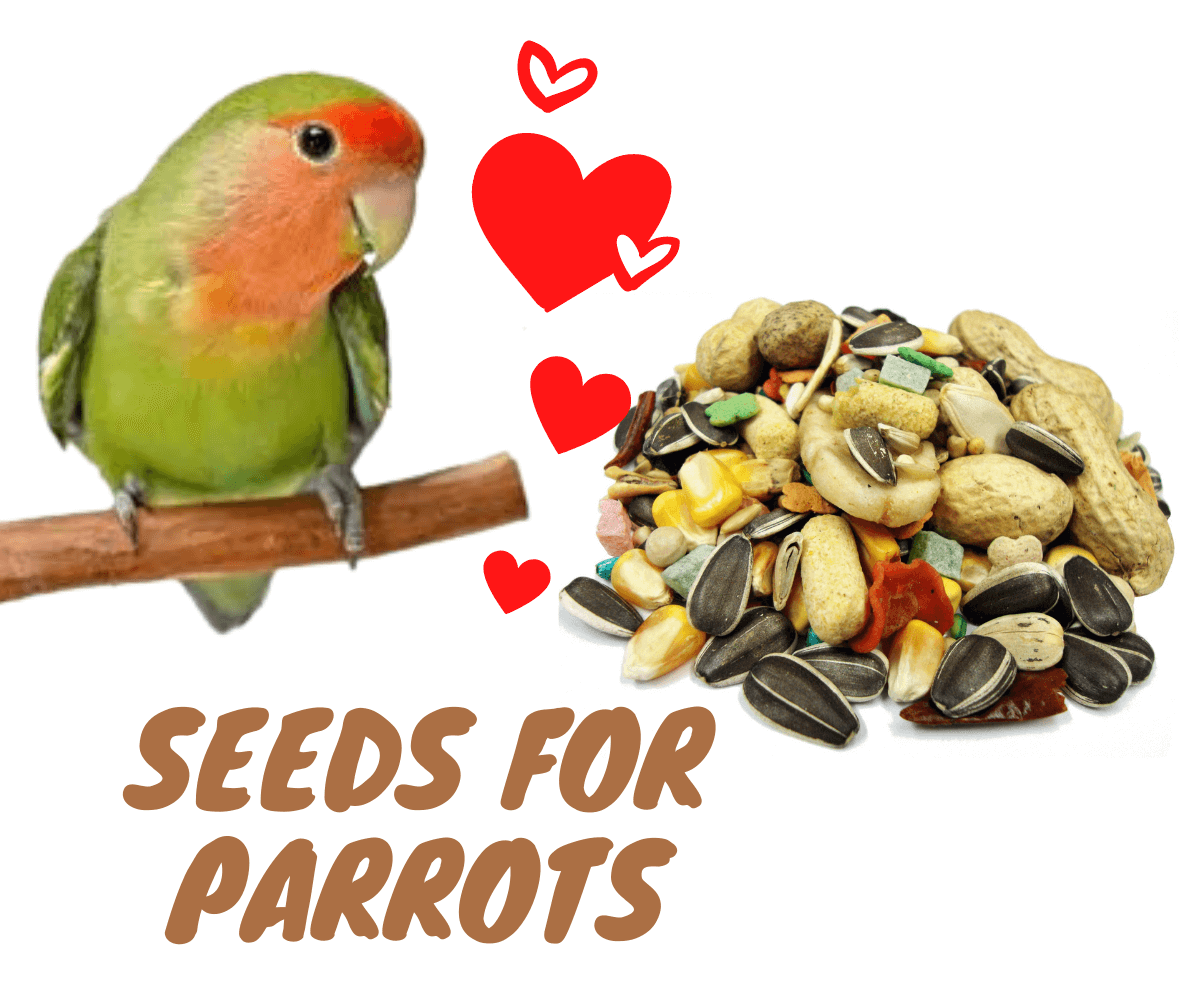
You will find dry seed mixtures adapted to each species
Seed mix for parrots
If possible, do not hesitate to vary the presentation of fresh foods: diced of different sizes, grated, cooked or raw, on a skewer … etc.
Each bird has its singularity and therefore has more or less marked attractions for certain foods and the way to present them. It is good to know how to adapt to their individuality.
For example, some of my macaws literally love oranges, others are extremely fond of grapes, my male cockatoo alba is greedy for cooked sweet corn, and my Gabonese grays love bananas.
As a rule, apples, bananas, mango, prickly pear, passion fruit, or pomegranate are very popular. As for vegetables, zucchini, beans, corn, carrot, squash, and chickpeas are quite easily adopted.
Another little advice if you don’t mind. Do not dispense food that has just come out of the refrigerator or is too ripe.
The cold often puts off parrots and can also cause digestive disturbances and you would be surprised how much your birds appreciate firm fruit.
Another little trick. Soaking sunflower seeds and legumes is a most favorable health asset for your parrots. This decreases the fat content of the first seeds and dramatically increases the nutritional value and digestibility of the second.
So, have fun, be imaginative, and above all diversify the diet of your parrots. Do not skimp on the quality of the food distributed. Avoid chemicals and dyes as much as possible.
Learn how to avoid waste by distributing the necessary amount to your bird. We tend to offer them too much and note with regret the waste we have to throw away.
There is a big difference between feeding your birds as well as possible and overfeeding them.
Related article:

